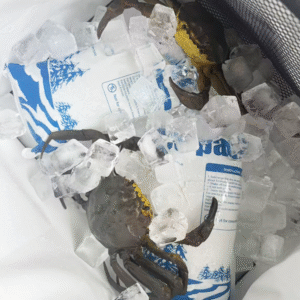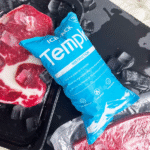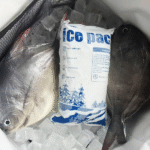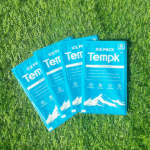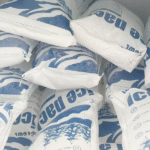¿Cuánto dura el hielo seco en una bolsa?? 2025 Guía para la logística de la cadena de frío
Si participa en el envío de productos sensibles a la temperatura, Comprender cuánto dura el hielo seco en una bolsa es fundamental.. La duración del efecto refrescante del hielo seco depende de varios factores, incluyendo la calidad del aislamiento, el tipo de hielo seco, y condiciones ambientales. Esta guía proporcionará una comprensión profunda de estos factores., junto con consejos para optimizar el uso de hielo seco para un enfriamiento más duradero, ayudándole a planificar sus envíos de manera más efectiva.
-
¿Cuánto dura el hielo seco en una bolsa? durante el envío?
-
¿Qué factores influyen en la vida útil del hielo seco en una bolsa??
-
¿Cómo se puede optimizar el uso de hielo seco para periodos de enfriamiento más prolongados??
-
¿Cuáles son las mejores prácticas para almacenar y transportar hielo seco??
¿Cuánto dura el hielo seco en una bolsa??
El hielo seco en una bolsa suele durar entre 18 a 48 horas, dependiendo de varios factores clave. A diferencia del hielo normal, que se convierte en agua, El hielo seco se sublima directamente en gas dióxido de carbono.. Su duración en bolsa está influenciada por la calidad del aislamiento., la cantidad de hielo seco, y la temperatura ambiente.
-
Calidad de aislamiento: Las bolsas con mejor aislamiento ralentizarán el proceso de sublimación, ayudando a que el hielo seco dure más. Bolsas de alta calidad fabricadas con materiales multicapa., como espuma o paneles aislados al vacío, son altamente efectivos.
-
Cantidad de hielo seco: Cuanto más hielo seco usas, Cuanto más durará. Una cantidad mayor proporciona más capacidad de enfriamiento, lo que le permite permanecer eficaz durante más tiempo.
-
Factores ambientales: La temperatura a la que se almacena y transporta el hielo seco juega un papel importante. Las temperaturas cálidas harán que el hielo seco se sublime más rápido, reduciendo su duración de enfriamiento.
Factores que influyen en la duración del hielo seco en una bolsa
| Factor | Influencia en la longevidad del hielo seco | Explicación |
|---|---|---|
| Calidad de aislamiento | Alto | Un buen aislamiento reduce la infiltración de calor., desaceleración de sublimación. |
| Temperatura ambiente | Bajo | Las temperaturas más altas aceleran la sublimación. |
| Cantidad de hielo seco | Alto | Mayores cantidades de hielo seco duran más. |
| Sello de bolsa | Alto | Una bolsa bien sellada minimiza la infiltración de calor., preservar el hielo seco. |
¿Cómo se puede optimizar la vida útil del hielo seco en una bolsa??
Para aprovechar al máximo tu hielo seco, Siga estas mejores prácticas para extender la duración de su enfriamiento.:
-
Utilice aislamiento de alta calidad: Invierta en bolsas aislantes de alta calidad con espuma gruesa o paneles aislados al vacío. El aislamiento multicapa puede aumentar significativamente el tiempo de enfriamiento, especialmente para el envío de larga distancia.
-
Mantenga la bolsa en un lugar fresco: Antes de usar, guarde el hielo seco en un área sombreada o con aire acondicionado para reducir la tasa de sublimación.
-
Limite la exposición al calor: Mantenga el hielo seco alejado de fuentes de calor como la luz solar o el contacto directo con superficies cálidas..
-
Monitorear los niveles de hielo seco: Compruebe periódicamente el hielo seco restante., y si es necesario, agregue más para extender el tiempo de enfriamiento.
Por ejemplo, un envío que contiene 2 kg de hielo seco en una bolsa bien aislada duraron 24 horas manteniendo una temperatura de -20°C, mientras que la misma cantidad en una bolsa mal aislada duró sólo 15 horas.
¿Qué factores afectan la vida útil del hielo seco en una bolsa??
Varios factores clave influyen en la longevidad del hielo seco:
-
Calidad del aislamiento y longevidad del hielo seco:
El aislamiento de alta calidad ayuda a reducir la velocidad a la que se sublima el hielo seco. Materiales como poliestireno expandido (EPS), espuma, y lámina reflectante crear una barrera contra el calor externo, ralentizar la sublimación. De término medio, Las bolsas bien aisladas pueden prolongar la vida útil del hielo seco desde 18 a 24 horas. -
Temperatura ambiente:
La temperatura ambiente afecta significativamente la tasa de sublimación.. El hielo seco en climas cálidos se sublimará mucho más rápido que en temperaturas más frías. Durante los meses de verano, aislamiento adicional o bloques de hielo pueden ayudar a proteger el hielo seco del calor.
Mejores prácticas para almacenar y transportar hielo seco en una bolsa
Para garantizar un rendimiento óptimo, Siga estas mejores prácticas para almacenar y transportar hielo seco.:
-
Use el aislamiento adecuado: Elija siempre alta calidad, Bolsas aislantes multicapa para una refrigeración más duradera..
-
Guarde el hielo seco en un lugar fresco, Lugar seco: Mantenga el hielo seco alejado de la luz solar directa o de fuentes de calor para ralentizar la sublimación..
-
Asegurar la ventilación adecuada: El hielo seco se sublima en gas dióxido de carbono, por lo que es crucial permitir una liberación adecuada del gas.. Una bolsa sellada sin ventilación puede acumular presión y posiblemente explotar..
¿Cómo se puede optimizar el uso de hielo seco para periodos de enfriamiento más prolongados??
A continuación se ofrecen algunos consejos para maximizar la vida útil del hielo seco durante el transporte.:
-
Monitorear la temperatura durante el transporte: Si es factible, usar un registrador de temperatura para rastrear el estado del hielo seco durante el transporte, asegurando que se mantenga dentro del rango de temperatura requerido.
-
Utilice bloques de hielo seco en lugar de bolitas: Los bloques de hielo seco se subliman más lentamente debido a su mayor masa y superficie reducida.. Si necesitas enfriamiento más duradero, Los bloques son una mejor opción que los pellets..
-
Aumentar la cantidad de hielo seco: Si la duración del envío es mayor, aumentar la cantidad de hielo seco ayudará a extender su tiempo de enfriamiento.
2025 Tendencias en el uso de hielo seco para la logística de la cadena de frío
El uso de hielo seco en la logística de la cadena de frío sigue evolucionando con nuevas tecnologías y materiales de embalaje.. En 2025, Soluciones de embalaje inteligentes, incluido Sistemas de monitoreo de IoT, están facilitando el seguimiento del estado del hielo seco durante el transporte. Las empresas también están explorando alternativas sustentables al hielo seco, usando Co₂ reciclado para minimizar el impacto ambiental y al mismo tiempo mantener una refrigeración eficaz.
Tendencias emergentes en logística y envasado de hielo seco:
-
Sensores inteligentes y monitoreo: El seguimiento en tiempo real de la temperatura y los niveles de CO₂ permite una mejor toma de decisiones y optimizaciones durante el transporte..
-
Alternativas ecológicas al hielo seco: Las empresas buscan formas de reducir la huella de carbono del hielo seco manteniendo sus propiedades refrescantes..
-
Materiales de aislamiento avanzado: El desarrollo de nuevos, El uso de materiales aislantes más eficientes aumenta la longevidad del hielo seco y ayuda a reducir el impacto ambiental de la cadena de frío..
Preguntas frecuentes
Q1: ¿Cuánto dura el hielo seco en una bolsa??
El hielo seco en una bolsa bien aislada dura entre 18 y 24 horas, dependiendo de la cantidad de hielo seco utilizado, la calidad del aislamiento, y la temperatura ambiente.
Q2: ¿Puedo guardar hielo seco en una bolsa de plástico??
No, Sellar hielo seco en una bolsa de plástico es peligroso porque la sublimación del gas CO₂ puede hacer que la bolsa explote.. Utilice siempre bolsas ventiladas o forros transpirables para un transporte seguro..
Conclusión y recomendaciones
En conclusión, La vida útil del hielo seco en una bolsa está influenciada por varios factores clave, incluida la calidad del aislamiento., temperatura ambiente, y la cantidad de hielo seco usado. Siguiendo las mejores prácticas, como el uso de bolsas aislantes de alta calidad., minimizar la exposición al calor, y usar bloques de hielo seco durante períodos más prolongados, Puede ampliar significativamente la eficacia del hielo seco durante el transporte..
Para futuros envíos, considerar invertir en monitoreo inteligente de temperatura sistemas y explorar alternativas de hielo seco más sostenibles para mantenerse a la vanguardia de las tendencias en la industria de la logística de la cadena de frío.
Llamado a la acción:
Listo para mejorar sus envíos de hielo seco? Póngase en contacto con nuestros expertos para obtener asesoramiento personalizado o explore nuestra gama de soluciones de embalaje aislado diseñadas para una refrigeración más duradera..






